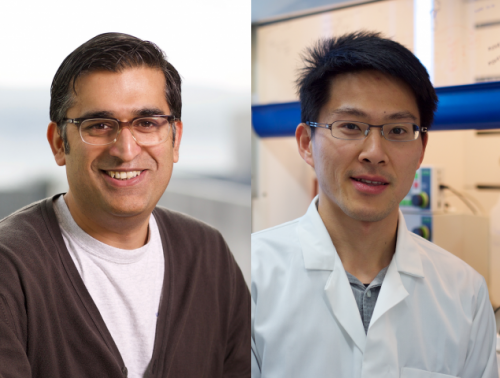
Dr Virdee and colleagues in the Medical Research Council Protein Phosphorylation and Ubiquitylation Unit (MRC PPU) have discovered a novel class of E3 ligase. The E3 ligase, MYCBP2, operates in a unique way, selectively transferring ubiquitin to non-lysine amino acids with selectivity for threonine. The ubiquitin is linked to the threonine amino acid via a chemically distinct ester linkage thereby uncovering an unanticipated area of cellular biology. The findings are published in Nature.
Dr Virdee said, “Textbooks will tell you that ubiquitylation is a modification of lysine residues. Although there have been a handful of reports describing non-lysine ubiquitylation, a human E3 ligase with non-lysine activity has remained elusive so this is a very significant finding with fundamental underpinnings.”
E3 enzymes have been identified as highly promising future drug targets for diseases including cancer, autoimmune disorders and neurodegeneration. MYCBP2 works in a different way from the other classes of E3 ligase.
Uniquely, the enzyme has two active sites and relays the ubiquitin molecule between them. This opens up new strategies for modulating its activity for therapeutic benefit, as it has been shown that putting the brakes on MYCBP2 could benefit patients suffering from a range of neurological disorders.
MYCBP2 activity drives the degeneration of neurons hence therapeutic strategies that inactivate this E3 enzyme have therapeutic potential for treating a range of neurological disorders such as Alzheimer’s and Parkinson’s disease.
The Virdee lab made the discovery that MYCBP2 is a mechanistically novel class of E3 by applying chemical biology technology known as activity-based protein profiling. Activity-based protein profiling requires a chemical probe molecule that is tailored towards a particular enzyme class. The Virdee lab successfully developed activity-based probes for E3 ligases in earlier work published in Nature Chemical Biology.
Dr Virdee said, “We hope this finding illustrates the importance of funding long-term interdisciplinary research and I am grateful to the MRC Unit for allowing my lab to do just that. The probes are great because they don’t have a biased assumption of what an E3 ligase should be. They also tell us when E3s are switched on or off so we are hoping we can use this feature to understand other E3s which might be involved in disease-relevant processes.”
Kuan-Chuan Pao, a PhD student in the Virdee lab, who was involved in probe conception through to this striking biological discovery says:
”It’s kind of a ‘dream come true moment’ for me as a PhD student seeing that your daily hard work really contributes to some huge discovery that expands our knowledge toward life science. In addition, as a trained chemist, it’s been my goal to bridge chemistry and biology, exemplified by the chemical probes we use to answer or solve biological questions. We hope we can use this powerful platform to accelerate drug discovery in the near future and in the meantime, discover more exciting new biology.”
This study was carried out in collaboration with Professor Daan van Aalten (University of Dundee) and Kay Hofmann (University of Cologne).
Professor Dario Alessi, Director of the MRC PPU, said, “I would like to congratulate Dr Virdee and his team for this curiosity-driven discovery. This is certainly one of the most astonishing breakthroughs made in our MRC Unit since I have been its Director and opens the door to an unexplored area of biological research that may have strong links to better understanding human disease.”

